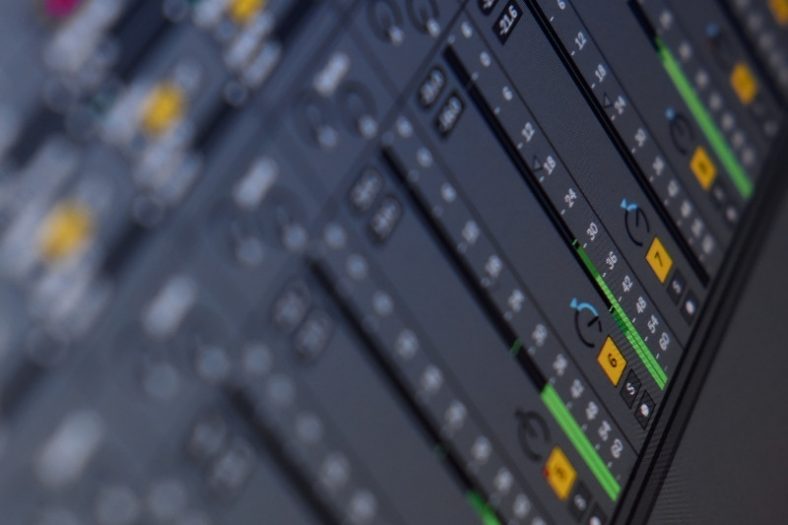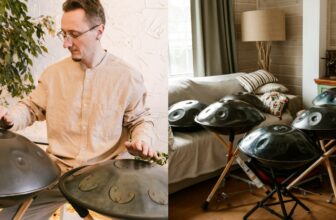What are Buses, Sends, and (Aux) Returns – How to Use Them

Working with a digital audio workstation (DAW) is a lot about routing audio through different tracks. To do so, music producers rely on buses, sends, and aux tracks, also known as return tracks.
These make for incredibly useful tools for improving workflow, processing multiple files simultaneously, and saving precious CPU usage (among other uses). But what are buses, sends, and (aux) return tracks? And how can you make the most of them?
Contents
What are buses?
Buses are tracks that receive the output of multiple channels. If you route the output of five different drum tracks to a single channel, for instance, you’re creating a bus track.
Most DAWs feature at least one bus track—the master channel, the signal path to which all tracks in a mix are routed.
In DAWs such as Ableton Live, bus tracks can be easily created with the Group function. By selecting two or more tracks and hitting CTRL + G or COMMAND + G, music producers can instantly create a group.
Despite their name, Group tracks are effectively buses: they’re a single channel that receives the combined output of multiple other channels.
What are sends?
Sends are faders that allow music producers to send a determined amount of a channel’s output to an aux track. In most DAWs, each channel in the mixer features one send per available aux track.
Sends are adjustable, meaning they define the amplitude of the signal that’s being routed to a given aux.
Unlike buses and aux tracks, sends aren’t active channels in the mixer. Instead, they’re a useful parameter that allows music producers to quickly send signals to an aux track.
When a channel is routed through a bus, its output is necessarily changed. But when a send is activated, the output of its associated channel remains unaltered and is merely duplicated in the aux track.
What are (aux) return tracks?
Aux tracks, also known as return tracks, are tracks that receive the output of multiple channels via sends. Unlike regular tracks, they cannot be used to record audio. Their point is to process multiple signals using the same one or more audio effects.
Aux is an abbreviation of the word auxiliary, and that pretty much sums up what aux tracks are about. Combined with sends, aux tracks allow music producers to add a selectable amount of processing to any channel in the mixer with the tweak of a knob.
Without aux tracks, techniques such as parallel processing—duplicating a track’s signal to generate a dry (unprocessed) and wet (processed) signal—would be very time-consuming.
How to use buses, sends, and (aux) return tracks
It’s very easy to work with buses, sends, and aux tracks inside a DAW.
Buses can be created by grouping tracks or by changing the output of a signal from the master channel to an intermediary bus.
Aux tracks can be created just like regular audio tracks, and most DAWs feature at least one or two aux tracks in their template projects.
As for sends, they’re automatically generated once an aux track is created. There’s a send on each channel of the mixer, and it’s labeled according to the available aux tracks. In Ableton Live, for instance, send A corresponds to the aux track A, and so on.
In the era of digital audio, buses, sends, and aux tracks are a given. But to truly make the most of them, it’s necessary to understand their benefits and what they can be used for.
What are the benefits of using buses, sends, and aux tracks?
- Using the same audio effect to process multiple signals.
- Adding audio effects to channels more quickly.
- Saving CPU usage by making the most of audio effects.
- Saving time by tweaking audio effects just once.
- Organizing mixes by grouping tracks.
- Creating dry/wet signals quickly.
- Adding cohesion to mixes by using audio effects with similar parameters.
Using sends and aux tracks for parallel processing
Sends and aux tracks make parallel processing effortless. All it takes is to add audio effects to the aux tracks and use the sends to determine the amplitude of the wet signal according to taste. Parallel processing is great for mixing because it allows music producers to maintain the amplitude of the original dry signal while also adding new sonic content to the mix.
When you add reverb to a vocal channel, for instance, you’re forced to tweak the amplitude of the vocals because reverb—even when used sparingly—makes sounds quieter. This doesn’t happen when you add reverb to the vocals via an aux track, as the vocals are duplicated into parallel dry/wet signals.
A few things to keep in mind during parallel-processing
- Keep the dry/wet knob of the audio effects loaded into the aux tracks at 100%. The sends work effectively as dry/wet knobs, so there’s no point in routing any percentage of unprocessed signal through the aux tracks.
- Make aux tracks count. You can load any amount of audio effects to an aux track, so make sure you’re getting the sound you want from it. Aux tracks are about saving CPU usage, but that doesn’t mean you have to stick to the one reverb, delay, or phaser effect. Adding a discreet compressor to a reverb aux track, for instance, can make it sound tighter and more distinguishable.
- Add a high-pass filter to the aux tracks. This is crucial when it comes to spatial effects such as reverb and delay. Even if used with care, these audio effects may end up overloading the low-frequency range of the mix—especially if they’re being used to process a significant number of channels.
Using buses to process multiple channels simultaneously
Buses are a great tool for processing multiple channels simultaneously. By sending all the drum tracks in a mix to the same bus, for instance, music producers can instantly add the same audio effect to all the drums. Among other things, this is great for compressors: applying one compressor effect to multiple channels is a great way of saving time and CPU usage while also enhancing sonic cohesion.
A personal favorite: bus-processing as a compositional tool
I love to use buses to make something entirely new out of a set of instruments I’m not particularly happy with. Whenever I feel blocked, I route a few harsh-sounding samples and beats to a bus and add as many audio effects as needed to turn them into something new.
Spatial effects such as reverb and grain delay are great, but my personal favorites are VSTs in the line of iZotope Thrash or Polyverse Music’s Manipulator.
By using audio effects abusively, it’s possible to turn a few boring, rusty loops into something fresh and exciting. In the end, I resample the bus channel to a regular audio track to save CPU usage.
Summary
Buses, Sends, and Returns are powerful tools in a music producer’s arsenal. By understanding how they work, you’ll get more out of your mixes faster.
If you still haven’t incorporated buses, sends, and aux tracks into your workflow, get ready for a big change. Dominating these incredible audio-routing tools is a must-do to make the most of any DAW.
You will use audio effects more quickly and wisely, save precious time by sticking to the good-sounding effects you already have, and save tons of CPU usage in the meantime.





